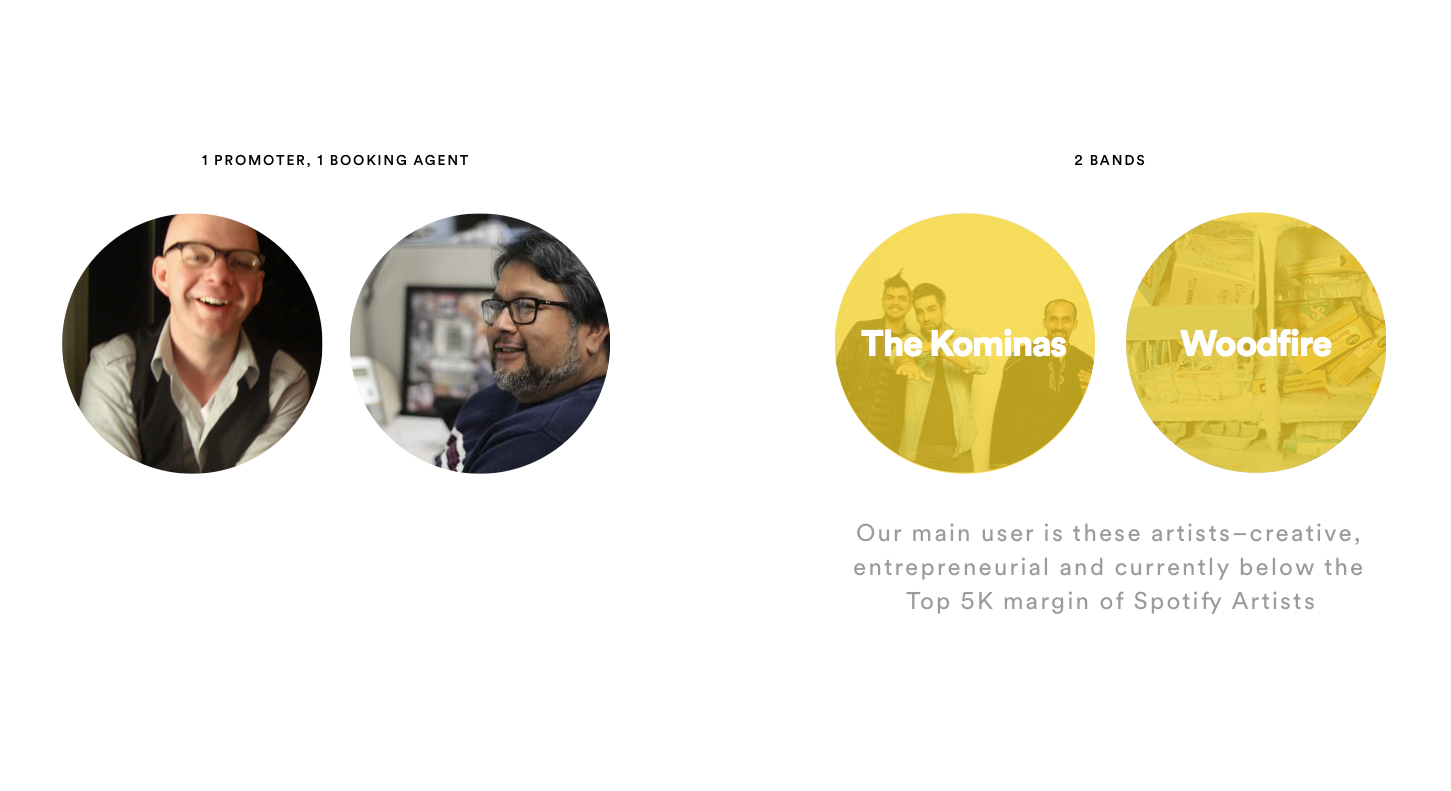Project Timeline: Aug 1 – Sep 16, 2016
I worked on the Creator Tribe at Spotify, which builds tools and products to empower Artists on Spotify. Creator is structured around artists' core needs: Grow, Engage, Earn, and Understand.
 Background
Background
The project around Tour Planning was initially started as a hack called Venue Recommender during one of our bi-weekly hack days.


The design approach above was not efficient in designing for a minimal viable product. Although we were addressing the core pain points of an artist's journey in the venue booking process, the system got complex very quickly and would take much longer to build than a MVP that directly focused providing artists' value.
We put artists at the center of our brand.
We put artists at the center of our stories.
Our success metric is artist value. Rather than building a product from a technology or data point of view—why not build a product that directly empowers the creative, entrepreneurial artist who wants to be in charge of her growth? Often times we build products with what we have available and then spend time marketing it to our users.
User Research
I worked together with Colette Kolenda (User Research Intern) to formulate a questionnare for our user groups: Booking Agents, Promoter and Artists. Our goal was to ask for specific examples throughout, rather than generalities.
Research Subjects Research Synthesis
Research Synthesis
After interviewing the subjects, I synthesized the research, mapped out the user journey of an artist to book venues and added streams for pain points, data points, and opportunites.

 Pain Points
Pain Points
I'm focusing on two stages of the Artist's Venue Booking Journey (Venue Research and Contact Venue) because this is where the most pain points were present. Below are a few selected ones.
Venue Research
- What makes this venue unique and suitable for my needs?
- What are the backlines? "We are willing to compromise on $$ if equipment is provided. Carrying shit sucks man."
- Show are booked a year in advance
Contact Venue
- Lots of cold emailing to venues w/ a catchy subject line
- Keeping tracks of venues after sending them emails about your availabilities
- "I wish my music was more important than the idea of my band"
- "It would be great for us to decide on dates v/s they [venues] sending us their availabilities"
Problem
Artists are not able to accurately represent their personas to venues and talent buyers. Venues on the other hand have missed opportunities in finding fresher acts to work and collaborate with.
Hypothesis
By providing artists a tool to generate an honest, holistic representation of themselves, venues will quickly be able to gauge if that artist is suitable for them.
Solution
A Press Kit
IdeationLots of sketching, user-flows and click-through Invision prototypes

Design
Goals
- Design an end-to-end flow to build a personalized Press Kit
- Empower artists with tools to easily edit, manage and craft their content
- Design a Press Kit MVP that could be modified and optimized over time
